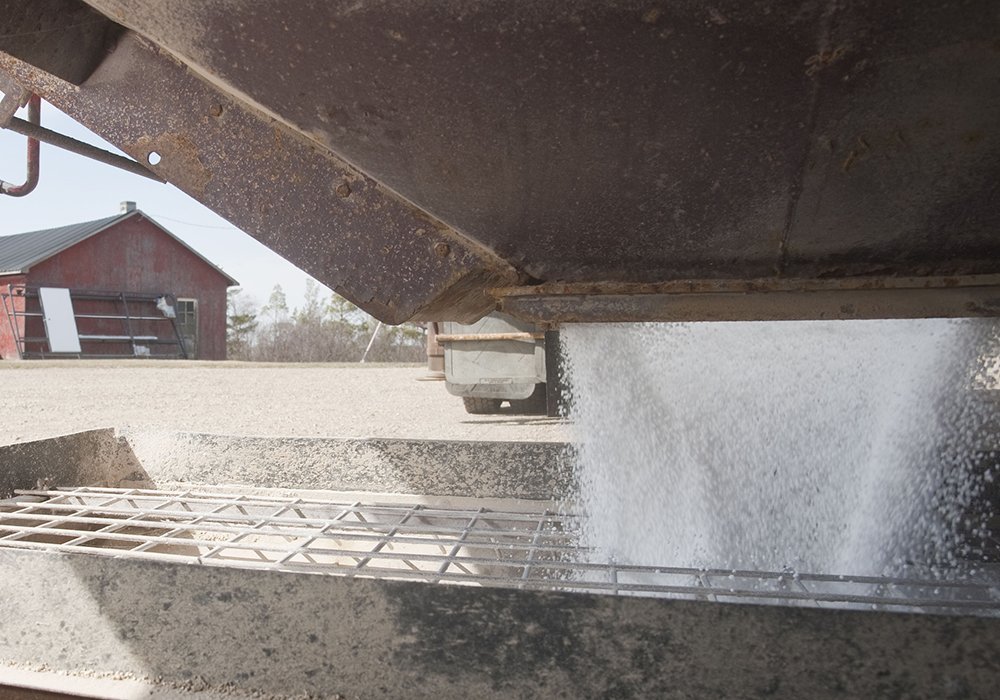Urea prices in New Orleans, Louisiana, are nearly half the level they were a couple of months ago.
A barge scheduled for loading in the last half of June traded for US$500 per tonne on June 2. That compares to a high of $935 per tonne in late March.
“I can’t remember a time at this point of the year that we’ve seen this much of a correction,” said Josh Linville, fertilizer analyst with StoneX.
Read Also

Canola oil transloading facility opens
DP World just opened its new canola oil transload facility at the Port of Vancouver. It can ship one million tonnes of the commodity per year.
He figures it will take until late July or early August for the lower prices to work their way into the retail system in Western Canada.
Linville attributes the freefall in a large part to the slow start to seeding in the United States. The fertilizer industry is built for an on-time system and field work was far from on time this year.
Another factor is that urea imports have been well ahead of normal in the U.S. market and globally.
Fertilizer markets initially thought Russia’s exports would fall to zero due to economic sanctions. But Russian tonnes have been arriving in markets like India and Brazil.
Rejeana Gvillo, senior commodity analyst with Farmers Business Network, said a lot of the downturn has to do with seasonality. There isn’t a lot of urea demand in the northern hemisphere at this time of year.
But she agreed that Russian supplies have surprised the market. Russia’s export restrictions have been eased for the month of June, although they are supposed to be reinstated in July.
“There is a bit more competition because Russia is back on the market selling. They have a month to flood the market,” said Gvillo.
The market is also keeping close tabs on China, which has yet to lift its export ban on phosphate and nitrogen fertilizer products, which was supposed to expire in June.
Nobody knows what’s going to happen on that front. There is speculation ranging from China having a full export program starting right away to the country extending its ban until the end of December or even June 2023.
Linville said the third big strike against urea prices is that U.S. farmers are shifting away from corn, which is a big user of the crop input.
Markets initially anticipated farmers would seed up to 93 million acres of corn. The U.S. Department of Agriculture surprised everyone with its March planting intentions report that said growers were going to plant 89.5 million acres.
StoneX now thinks it will be closer to 88.6 million acres, while other analysts are as low as 86 million acres.
The upshot of all three factors is that urea demand is well below what the market had been anticipating and supply is higher than once thought and that is why prices have tumbled.
Farmers are asking Linville whether this is a temporary market correction and urea prices will soon rebound to sky-high levels. They want to know if they should buy product for spring 2023.
“I still lean towards no, because when I look at the current price of urea versus let’s say corn for example, we’re still fairly well over the recent year ratios,” he said.
In other words, urea prices are still quite high relative to corn prices. The market has only been at or above the $500 per tonne market three times in history, so today’s prices are still at lofty levels.
“It’s really, really hard to see a reason (to buy) right now with this kind of a bearish market going on,” said Linville.
Gvillo is in the opposite camp.
“We’re suggesting to producers to take advantage of these price dips and get some coverage if you can. But a lot of it is going to depend on your local situation,” she said.
Gvillo said natural gas prices haven’t fallen, so urea prices could be on the rise again as soon as the seasonal break is over.
“We don’t think that this is going to last forever. We think that this will be relatively short-lived,” she said.
Contact sean.pratt@producer.com


















